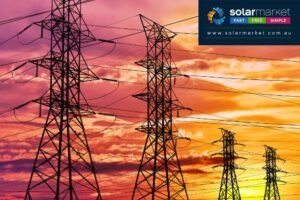AS/NZS 4777.1:2024 was published on Friday 23rd of August 2024, introducing several key welcome updates to its 2016 predecessor. The updates aim to simplify the installation process, enhance clarity, and accommodate the evolving landscape of renewable energy. Here’s a breakdown of the essential changes:
1. New 1000-volt limit on Domestic Systems
This increase in volt limit allows the connection of more panels to a single inverter, making it possible to fill your roof space without the added expense of additional inverters. If you have a 3 Phase system, or are considering an upgrade, these new regulations are highly beneficial. If you would like to maximize the solar potential of your roof and get some quotes, Solar Market can help – Get Quotes
2. Revised Protection Requirements
The requirement for “interface protection” has been relaxed for systems under 200 kVA, unless required by local distribution network service providers (DNSP). Removing the <200kW grid protection burden is good news for Australia, as it means that systems will be more cost effective and faster to install and allow solar projects to be rolled out at an increased rate (though compliance with DNSP requirements remains key).
3. Introduction of Phase Balance Limits
New limits on phase balance have been introduced, particularly important for larger installations. The standard now imposes a maximum limit of 30 kVA for single-phase installations, contingent on the grid supply capacity or the installation’s overcurrent protection.
4. Streamlined Terminology
The term “Standalone Mode” has been removed to simplify the language used in the standard. Previously, this term described systems operating independently of the grid.
5. Clarifying Related Standards
The update makes a clearer distinction between AS/NZS 4777.1 and other related standards, such as AS/NZS 5033 and AS/NZS 5139. This revision ensures that AS/NZS 4777.1 now solely governs the installation of inverter energy systems, while AS/NZS 5033 covers PV arrays up to the inverter input terminals, and AS/NZS 5139 focuses on battery systems. This separation helps to minimize confusion and overlap, simplifying the compliance process for installation of inverter systems.
6. Integration of Vehicle-to-Grid (V2G) Technology
The standard now accommodates V2G technology, allowing electric vehicles to integrate more seamlessly with the grid, either contributing to or drawing from it.
7. Limiting Inverter Main Switches
To improve safety and maintenance, the standard now restricts the number of inverter main switches to two per switchboard. For systems with more than two inverters, an aggregation or marshalling board is required. This change simplifies both operation and maintenance.
8. Updated Supply Type Definitions
Definitions related to types of power supply have been updated to reduce confusion and clarify the roles of various supply types in grid interaction.
- Normal Supply: Traditional grid supply controlled by the main switch.
- Supplementary Supply: Systems that work alongside the grid but don’t function independently.
- Alternative Supply: Systems that switch to a backup source, like a generator, during grid outages.
- Independent Supply: Systems that power an installation independently, using the grid only as a charging source.
- Substitute Supply: A niche category where a system supplies power to a single outlet, similar to solutions like the Fronius PV Point.
9. New Category: Inverter Power Sharing Devices (IPSD)
This update addresses the growing trend of shared solar resources in multi-dwelling developments, introducing a category to support these configurations. This new definition is critical for scenarios where multiple users, such as residents in an apartment block, share a single PV system.
10. Consistency Across Standards
Terminology and definitions have been aligned with those in AS/NZS 4777.2, improving consistency across standards and simplifying the design and installation process.
Conclusion
The 2024 update to the AS/NZS 4777.1 is all about making things clearer, simpler, and more suited to the fast-moving world of renewable energy. If you’re in the business, these changes will help you stay on top of your game and keep those installations smooth and compliant. If you’re a homeowner, these new regulations will make it easier and cheaper for you maximize the solar potential of your roof.
Contact Solar Market today and get your 3 no obligation solar quotes. Then sit back, compare and choose the best deal.










